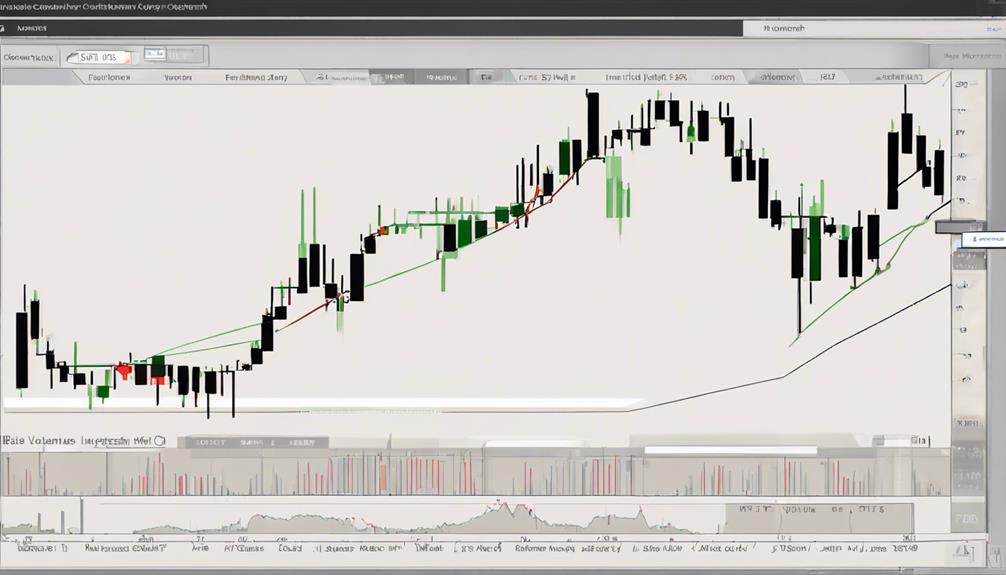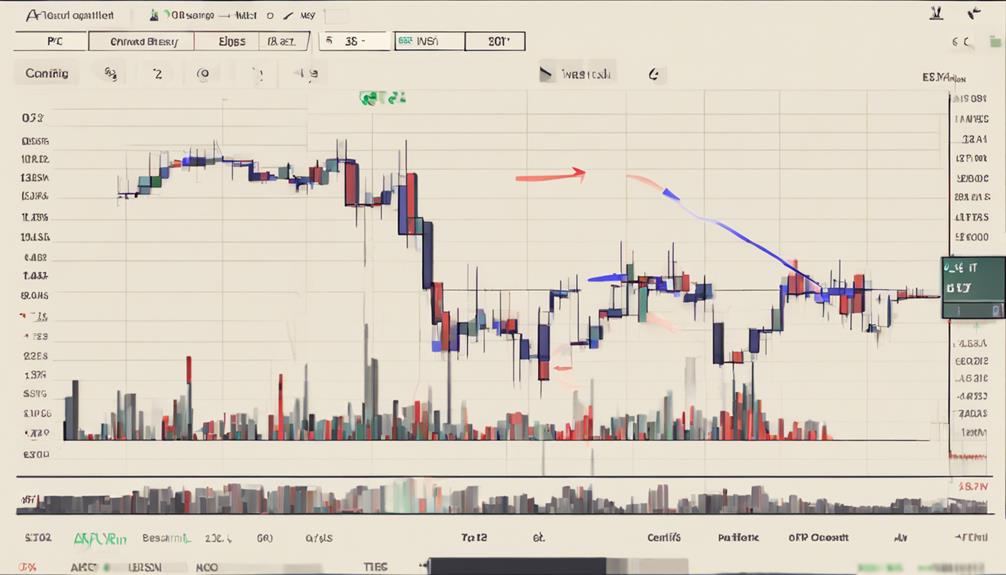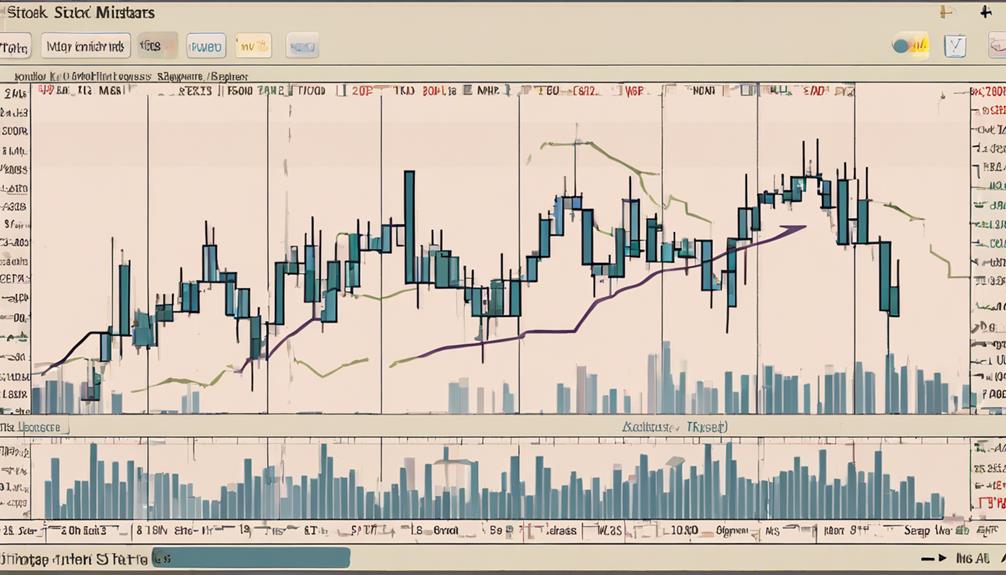If you're looking to enhance your trading performance, mastering volume-based indicators can be a game-changer. From spotting potential trend reversals to confirming market sentiment, volume analysis offers valuable insights.
But how can you effectively leverage these indicators to boost your trading success? Stay tuned to discover five practical tips that can help you optimize your trading strategies and make informed decisions in the dynamic world of trading with volume-based indicators.
Understanding Volume-Based Indicators
Understanding volume-based indicators is essential for traders looking to analyze buying and selling pressure effectively in the market. Volume indicators such as the Chaikin Money Flow and Accumulation/Distribution Line provide insights into market sentiment and trend movements.
These technical tools utilize volume data to confirm price trends, identify trend strength, and detect potential reversals in the stock market. The Chaikin Volume Indicator specifically tracks the accumulation and distribution of smart money, aiding in recognizing institutional buying or selling pressure.
Incorporating volume-based indicators into trading strategies can help traders confirm breakout opportunities, evaluate market strength, and enhance risk management techniques. By understanding these indicators, traders can make more informed decisions based on the underlying volume dynamics influencing price movements in the market.
Interpreting Volume Signals Correctly

To interpret volume signals correctly in trading, observe high volume during price increases for indications of strong upward momentum. When analyzing volume signals, keep the following in mind:
- Volume spikes confirm breakout signals: Increased volume during a breakout signifies heightened market interest and validates potential price movements.
- Volume can signal trend reversals: Pay attention to volume accompanying price changes as it can indicate a shift in market sentiment and potential trend reversals.
- Understanding volume patterns aids in trading decisions: Correctly interpreting volume signals provides valuable insights for making informed trading decisions based on market dynamics.
Applying Volume Analysis in Trading Strategies

Utilizing volume analysis in your trading strategies empowers you to confirm trend strength and pinpoint potential trend reversals efficiently. By incorporating volume-based indicators such as On Balance Volume (OBV), Money Flow Index, Market Facilitation Index (MFI), and Chaikin Money Flow (CMF), you can enhance your trading strategies.
These indicators provide valuable insights into trend status and institutional accumulation-distribution dynamics, improving your risk management and increasing your trading odds. When applied effectively, volume analysis can help you make more informed decisions, capitalize on trends, and manage your positions more effectively.
Maximizing Trading Efficiency With Volume Indicators

To optimize your trading efficiency using volume indicators, incorporating On-Balance Volume (OBV) and Chaikin Money Flow (CMF) can significantly enhance your ability to confirm market trends and identify potential reversals. Utilizing these tools effectively can improve your trading success rates by confirming trend strength, spotting false breakouts, and warning of possible trend reversals.
Key features like smart money accumulation and distribution highlighted by volume indicators help you make informed decisions, ultimately leading to more profitable trades. By paying attention to volume spikes that indicate sharp price movements, you can gain insights into potential trend changes and seize trading opportunities swiftly. Integrating volume-based indicators into your trading strategy can enhance risk management and overall trading performance.
- Confirm trend strength
- Spot false breakouts
- Warn of possible trend reversals
Overcoming Common Volume Indicator Mistakes

Avoiding common volume indicator mistakes is crucial for traders looking to make accurate and informed trading decisions in the market.
Relying solely on volume without considering price action can lead to inaccurate trade signals. Overlooking volume confirmation for trade signals may result in missed opportunities, impacting the accuracy of trading decisions.
Ignoring volume analysis in conjunction with other indicators can also lead to errors. It's essential to adjust volume indicator settings for different trading instruments to improve accuracy.
Misinterpreting volume spikes without understanding the market context can further exacerbate trading mistakes. By being mindful of these common mistakes and incorporating volume analysis effectively, traders can enhance their decision-making process and optimize their trading outcomes.
How Can I Use Volume-Based Indicators to Improve my Trading Strategies?
Volume-based indicators play a crucial role in analyzing market trends and making informed trading decisions. By enhancing volume-based trade indicators, traders can better understand the strength of price movements and identify potential reversals. Utilizing these indicators effectively can lead to more successful trading strategies and improved overall performance.
Frequently Asked Questions
How Do You Use a Volume Indicator Effectively?
To use a volume indicator effectively, analyze volume trends for breakout confirmation and trend strength. Look for volume spikes indicating potential reversals. Incorporate indicators like OBV and CMF in trading plans for improved risk management and trading success.
What Is the Most Accurate Volume Indicator?
For the most accurate volume indicator, consider your trading strategy, preferences, and market conditions. Common options like OBV, CMF, and MFI offer insights on market sentiment, trends, and reversals. Combine indicators for a comprehensive view.
How Do You Day Trade Based on Volume?
To day trade based on volume, study trading activity for price confirmation. Volume spikes validate signals and indicate market interest. Monitor patterns for trend reversals. Analyze for liquidity, momentum, and sentiment insights. Enhance decisions with volume indicators.
What Is the Best Trading View Volume Indicator?
When choosing the best volume indicator on TradingView, consider your trading style and goals. Experiment with indicators like OBV, CMF, and MFI to find what works for you. What's best depends on you.
Conclusion
In conclusion, incorporating volume-based indicators into your trading strategy can greatly enhance your ability to analyze market trends and make informed decisions.
By understanding volume patterns and signals, applying volume analysis effectively, and avoiding common mistakes, you can maximize your trading efficiency and potentially improve your overall profitability.
Remember, mastering volume indicators is like unlocking the secret to predicting market movements with uncanny accuracy – a game-changer in your trading journey!
